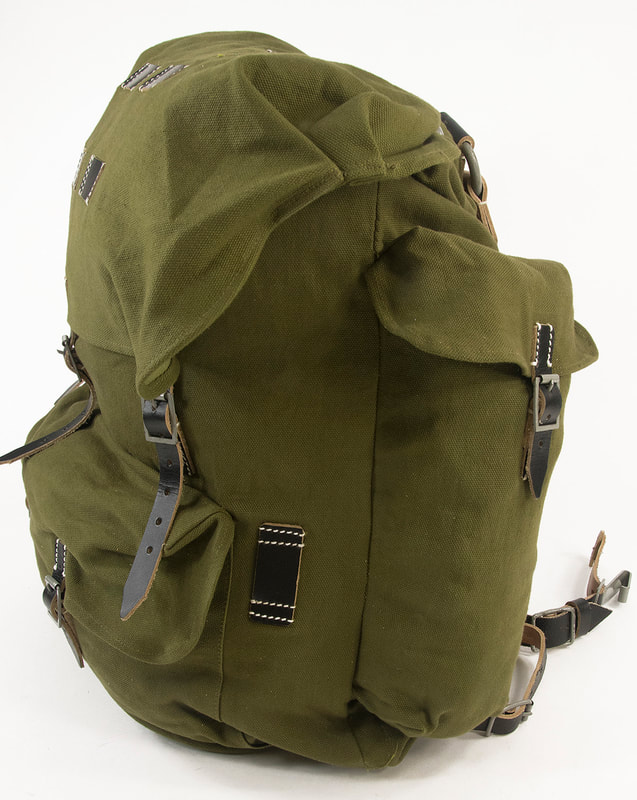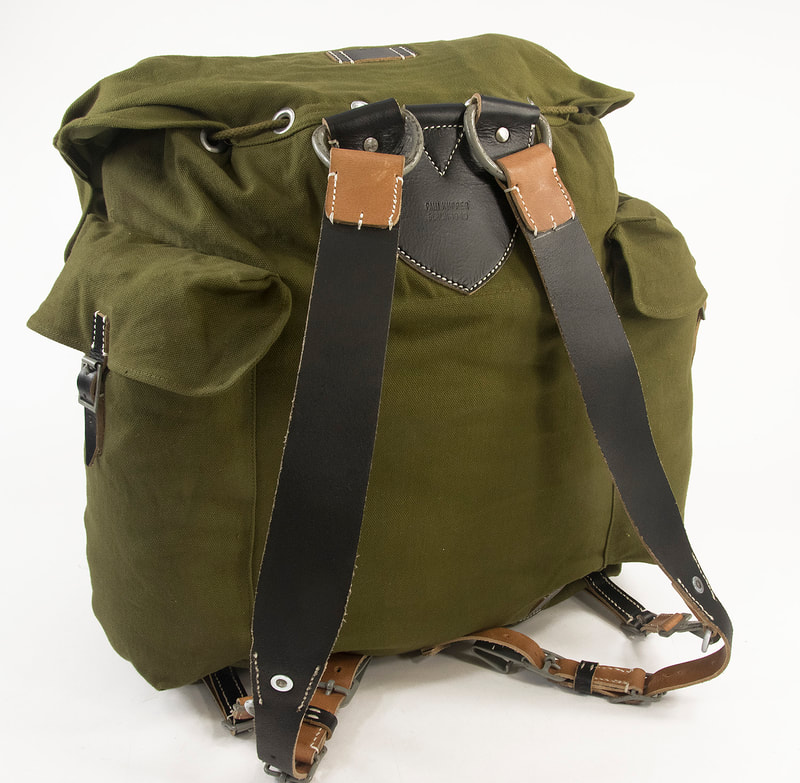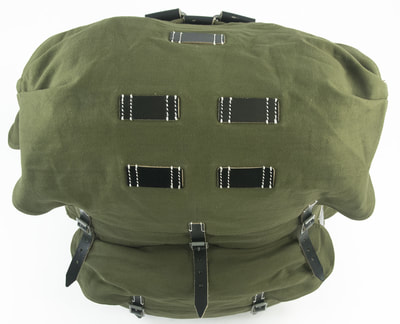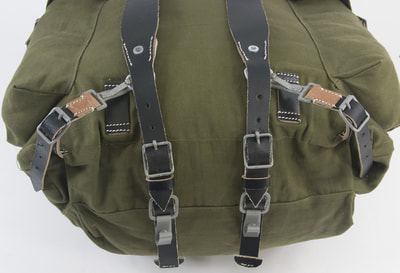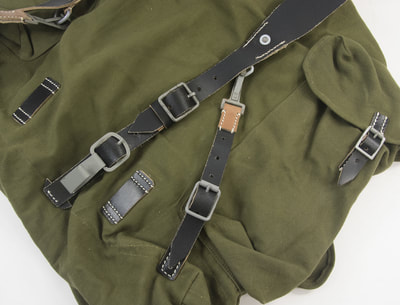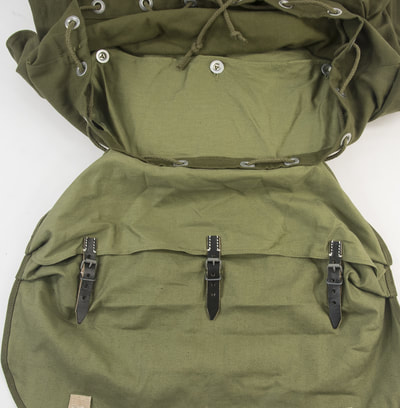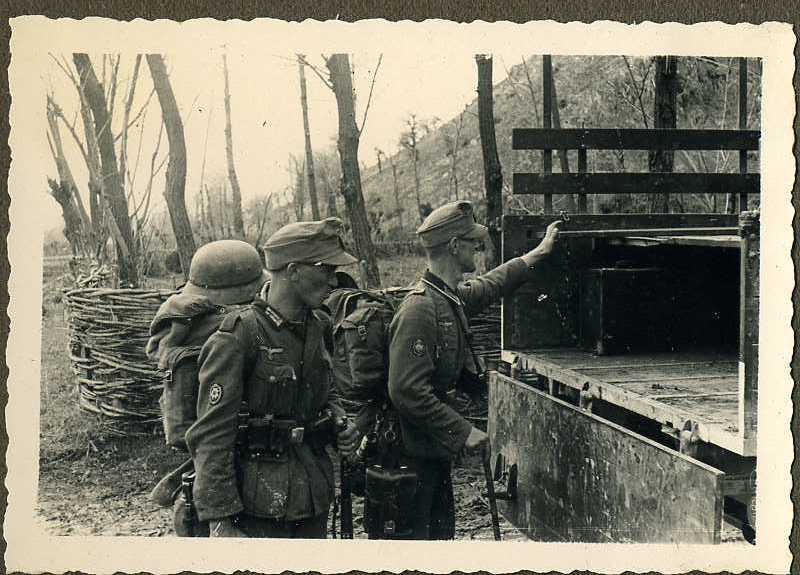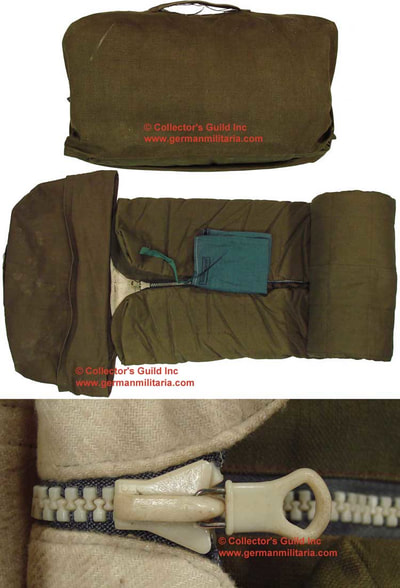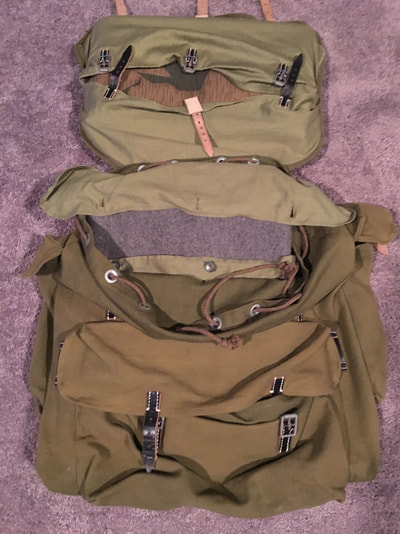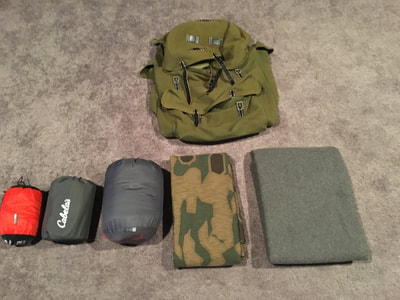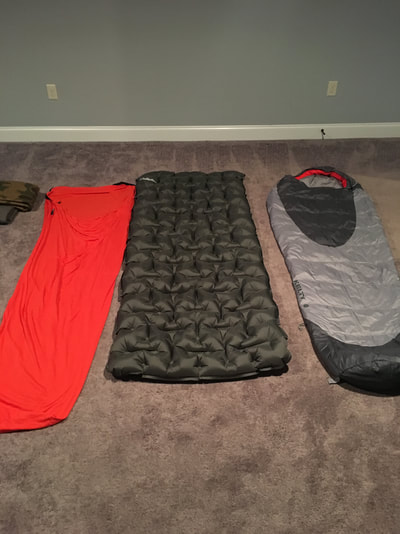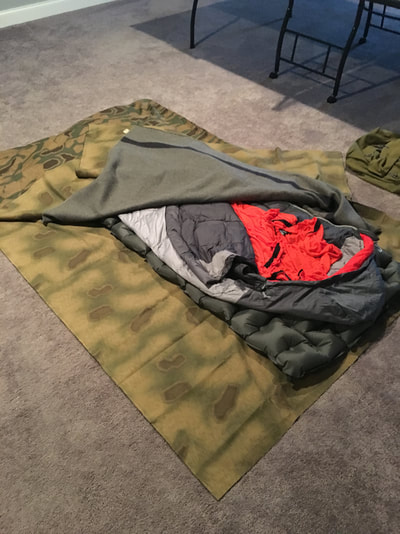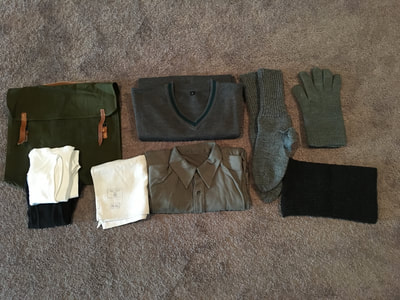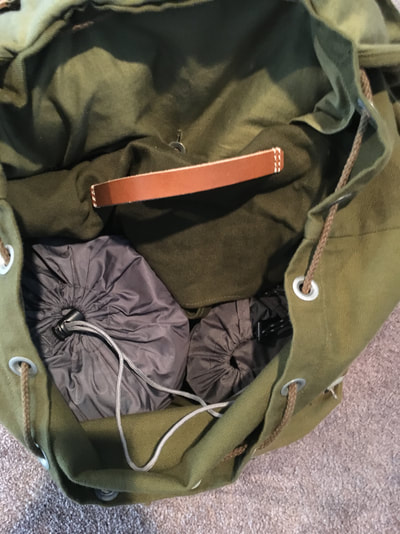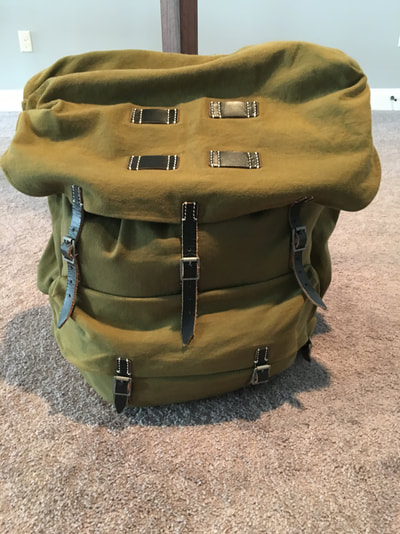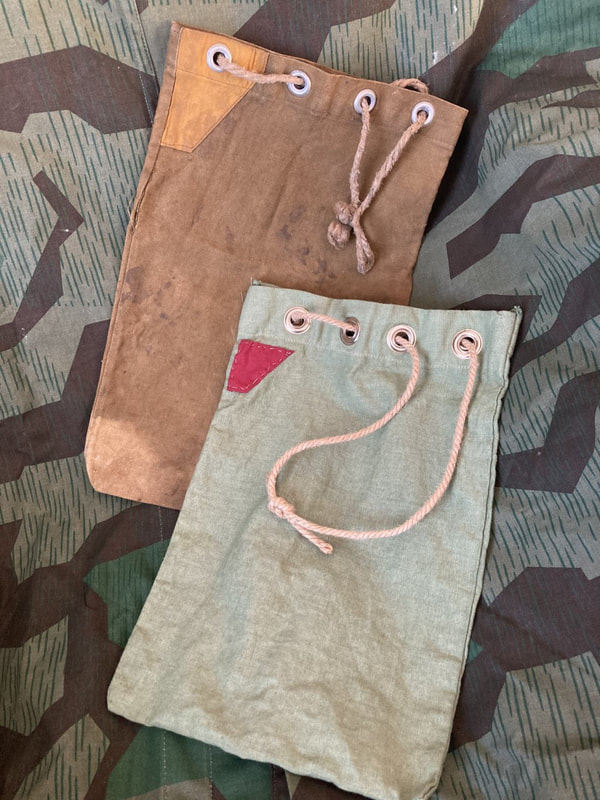The Rucksack
Because the Gebirgsjäger could not easily be supplied in the mountains, they carried more food, gear, water and clothing with them, which required a larger rucksack than that issued to lowland infantry.
The ruck featured on this page is a reproduction from At The Front.
INTERIOR
The Interior was intended to hold Camp Items that you did not need while on the march: blanket, spare clothing, food, stove, toiletries, air mattress and sleeping bag. The blanket was folded and inserted into the interior pocket that laid against your back. Clothing could be inserted into a clothing bag to keep it organized and from getting lost. They generally used small canvas stuff sacks, each with a different color tag, to hold other items. The ideas was to use the stuff sacks to make items easy to find. The pocket inside the flap/lid can be used to hold a zeltbahn quarter, ground sheet, windjacket, etc.
EXTERIOR
The Exterior pockets and loops were intended to hold Climbing and other Immediate Access items, such as extra ammunition, gloves, pitons, carabiners, crampons, snowshoes, food on the march, etc.
ADAPTING THE SLEEPING SYSTEM FOR MODERN USE
An extensive search (that is still in progress) was made to find out what the sleeping bag and air mattress looked like. We believe we found an original sleeping bag and it seems that air mattresses of the period were not unlike swimming pool rafts of today...inflate them by blowing into a tube until the cells fill with air. The air mattress added a significant amount of warmth.
Given the expense, fragility and rarity of original sleep sacks and air mattresses, I've searched for very compact and light modern versions that are not unlike the original designs. Cabela's has a very compact, light and easy to inflate air mattress that is 36 inches wide and 92 inches long-- very comfortable size. They also carry the compact and light weight Kelty bags. I chose a 40 degree bag for the cost and size.
I've also tinkered with the idea of a bivy sack made from zeltbahns or camoflage material. I am unable to configure zelts for a bivy. So I bought some camo and fashioned my own and somewhat large bivy that is sewn up one side and at the bottom. It can be folded and put in the ruck flap pocket. This sleep sack when unfolded is large enough to hold your weapon, gear and clothing while you sleep in it, keeping it all from being exposed to the air and dew.
I tested the entire system in about 40 degree, windy weather, climbing into the sleeping bag wearing long johns. It does work. The camo bivy sack does a great job of breaking the wind and providing a layer against ground moisture, insects, dirt, etc., and it does a nice job as a seal to keep air out. The wool blanket is an excellent layer for underneath that camo sack to cover you in the modern sleeping bag. The air mattress is comfortable and yes, it does keep you warm.
I suppose this whole experiment has taken some poetic license, but it's been fun.
The ruck featured on this page is a reproduction from At The Front.
INTERIOR
The Interior was intended to hold Camp Items that you did not need while on the march: blanket, spare clothing, food, stove, toiletries, air mattress and sleeping bag. The blanket was folded and inserted into the interior pocket that laid against your back. Clothing could be inserted into a clothing bag to keep it organized and from getting lost. They generally used small canvas stuff sacks, each with a different color tag, to hold other items. The ideas was to use the stuff sacks to make items easy to find. The pocket inside the flap/lid can be used to hold a zeltbahn quarter, ground sheet, windjacket, etc.
EXTERIOR
The Exterior pockets and loops were intended to hold Climbing and other Immediate Access items, such as extra ammunition, gloves, pitons, carabiners, crampons, snowshoes, food on the march, etc.
ADAPTING THE SLEEPING SYSTEM FOR MODERN USE
An extensive search (that is still in progress) was made to find out what the sleeping bag and air mattress looked like. We believe we found an original sleeping bag and it seems that air mattresses of the period were not unlike swimming pool rafts of today...inflate them by blowing into a tube until the cells fill with air. The air mattress added a significant amount of warmth.
Given the expense, fragility and rarity of original sleep sacks and air mattresses, I've searched for very compact and light modern versions that are not unlike the original designs. Cabela's has a very compact, light and easy to inflate air mattress that is 36 inches wide and 92 inches long-- very comfortable size. They also carry the compact and light weight Kelty bags. I chose a 40 degree bag for the cost and size.
I've also tinkered with the idea of a bivy sack made from zeltbahns or camoflage material. I am unable to configure zelts for a bivy. So I bought some camo and fashioned my own and somewhat large bivy that is sewn up one side and at the bottom. It can be folded and put in the ruck flap pocket. This sleep sack when unfolded is large enough to hold your weapon, gear and clothing while you sleep in it, keeping it all from being exposed to the air and dew.
I tested the entire system in about 40 degree, windy weather, climbing into the sleeping bag wearing long johns. It does work. The camo bivy sack does a great job of breaking the wind and providing a layer against ground moisture, insects, dirt, etc., and it does a nice job as a seal to keep air out. The wool blanket is an excellent layer for underneath that camo sack to cover you in the modern sleeping bag. The air mattress is comfortable and yes, it does keep you warm.
I suppose this whole experiment has taken some poetic license, but it's been fun.
